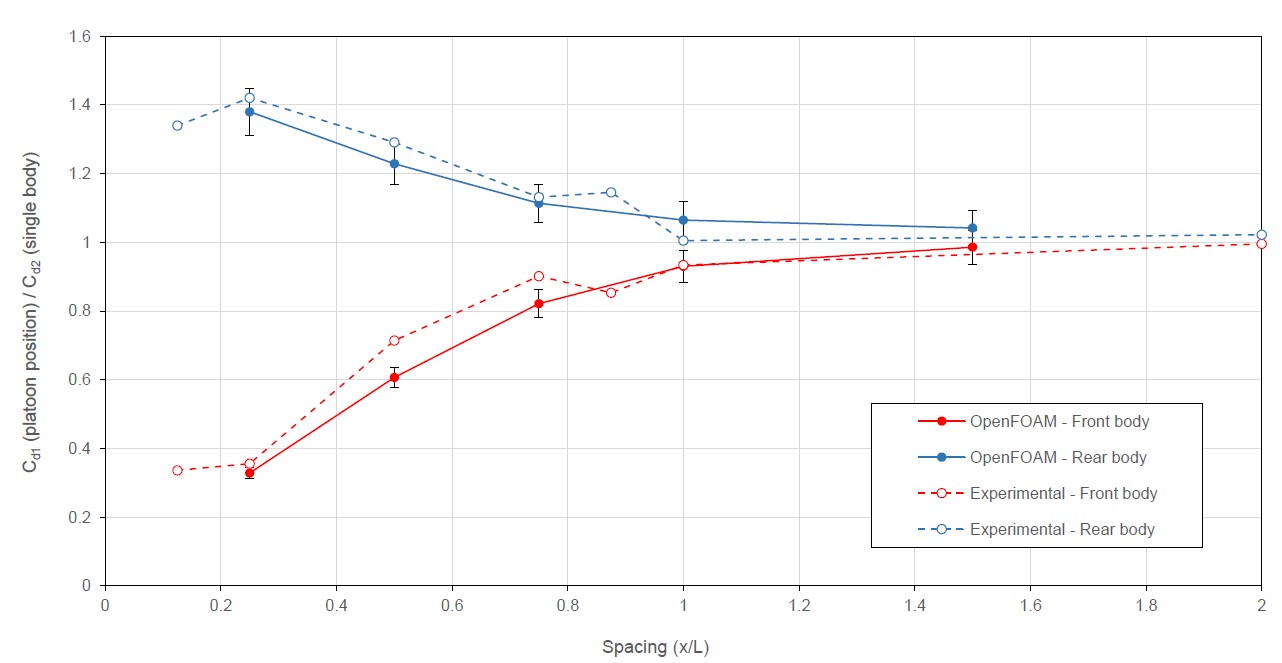OPENFOAM VALIDATION CASES
Two ahmed bodies in platoon
This validation case is a twist of the classical Ahmed body case [1]. Hereafter, we compare the numerical results obtained with OpenFOAM, against the experimental results obtained in references [2, 3]. The simulations were conducted for a slant angle of 25 degrees, a velocity of 40 m/s and at different spacing between the vehicles.
 |
| Two ahmed bodies in platoon configuration |
 |
| Spacing definition for the two ahmed bodies, where x is the distance between the two bodies, L is the ahmed body length, and S is the non-dimensional inter-vehicle spacing (S = x/L) |
 |
 |
|
| Left image: pressure contours. Right image: velocity contours. Non-dimensional spacing S equal to 1. |
||
 |
 |
|
| Streamlines visualization. Blue streamlines are being released from the front body and red ones from the the rear body. |
||
 |
| Normalized drag coefficient against inter-vehicle spacing S. The numerical results (continuous line) are shown with 5% error bars. The experimental results (dashed line) were extracted from references [2,3]. |
In the previous figure, the normalized drag is defined as,

and where the drag of the single ahmed body was computed in the single ahmed body validation case.
warning The experimental values were extracted from plots illustrated in references [2,3].
We can not guarantee the accuracy or precision of this information.
Note: the meshes were generated using a third-party application.
References:
[1] Some Salient Features of the Time-Averaged Ground Vehicle Wake, SAE-Paper 840300, 1984.
[2] Aerodynamic Performance of Vehicles in Platoons: The Influence of Backlight Angles. SAE Technical Paper 2007-01-1547, 2007.
[3] On the Aerodynamic Performance of Automotive Vehicle Platoons Featuring Pre and Post-Critical Leading Forms. R. Pagliarella, PhD Thesis. RMIT University.
